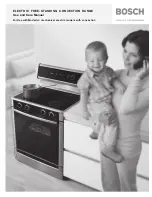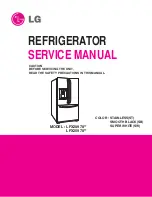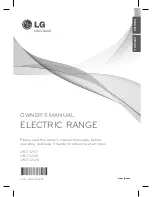
12
Operating Your Range
Bakeware Tips
Dacor’s optional full-sized cookie sheets maxi-
•
mize baking capabilities by utilizing the most
usable rack space. See the
Accessories
section
for ordering information.
Use the pan size and type recommended by the
•
recipe to ensure best results.
Cakes, quick breads, muffins and cookies should
•
be baked in shiny, reflective pans for light,
golden crusts.
Medium gauge aluminum sheets with low sides
•
should be used when preparing cookies, biscuits
and cream puffs.
Bake most frozen foods in their original foil con-
•
tainers placed on a flat cookie sheet. Follow the
package recommendations.
When using glass bakeware, reduce the recipe
•
temperature by 25˚F, except when baking pies
or yeast breads.
Follow the standard recipe baking time for pies
•
and yeast breads.
Avoid the use of old, darkened pans.
•
Warped, dented, stainless steel and tin-coated
•
pans heat unevenly and will not give uniform
baking results.
Place pans carefully on the oven racks. Turn
•
pans on the racks so that the long sides run left
to right, parallel to the door.
Dacor’s optional GlideRack oven rack is espe-
•
cially good for heavy food items like heavy pots
and pans full of food or the optional pizza baking
stone. You can pull it out further than a conven-
tional rack, making it easier to check the food,
stir or add ingredients.
Multiple Rack Baking
You can utilize more oven capacity due to the uni-
form air circulation provided by convection cooking.
Many foods, such as pizzas, cakes, cookies, biscuits,
muffins, rolls and frozen convenience foods can be
successfully prepared on either two or three racks at
the same time. Also, complete meals can be pre-
pared by using multiple racks. See below for specific
recommendations.
MULTIPLE RACK BAKING TIPS
Typically, when baking on two racks, use rack
•
positions 2 and 4.
When adapting a single rack recipe to multiple
•
rack baking, it may be necessary to add to the
baking time. This is due to the extra amount of
food in the oven.
Baking Tips (Continued)
Convection Bake Tips
As a general rule, convection bake will allow
•
preparation of most foods at reduced tempera-
tures for shorter periods of time, while also
producing superior results.
Typically you can reduce the standard tempera-
•
ture by 25˚F and cook for 10% less time. Baked
goods will have golden-brown crusts with flaky
textures, and meats will have crispy exteriors
with succulent juices sealed inside.
To convert conventional bake recipes to convec-
•
tion recipes, reduce temperature by 25˚F and
the cooking time by approximately 10%.
Some recipes, especially those that are home-
•
made, may require adjustment and testing when
converting from standard to convection modes.
If unsure how to convert a recipe, begin by
preparing the recipe in bake mode. After achiev-
ing acceptable results, follow the convection
guidelines listed. If the food is not prepared to
your satisfaction during the first convection trial,
adjust only one recipe variable at a time (such
as cooking time, rack position or temperature)
and repeat the convection test. If necessary,
continue adjusting one recipe variable at a time
until you achieve satisfactory results.
About Convection Baking...
The Dacor convection cooking system distributes the
heated air evenly to ensure uniform results. It also
channels the air evenly into the oven, eliminating
any hot or cool spots.
AIR FLOW










































